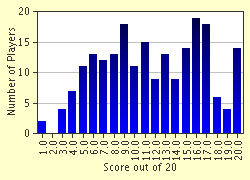Quiz Answer Key and Fun Facts
1. During their migration to Balkans in 6th-7th centuries A.D., Serbs worshipped a pagan cellestial God. What was his name?
2. The Cyrillic alphabet, used today in Serbia, was invented by St. Cyril (Constantine) and St. Methodius in the 9th century AD. On which older alphabet was it based?
3. Serbian literature developed from the 12th century. The most famous book of those times was known as ...?
4. In 1349 he promulgated a famous law code containing more than 200 statutes, regulating relations between the classes, and criminal law, and for the first time protected all the citizens on the basis of law. What was his name?
5. "The White Angel", a masterpiece of Serbian medieval fresco painting, can be found on the walls of a monastery. Which one?
6. What was the first printed book (1494) among the Serbs?
7. What is the name of the famous astronomer and mathematician from Dubrovnik, who is also the author of "The Theory of Natural Philosophy"?
8. The title of the first book written in modern Serbian was: 'The Life and the Adventures of Dimitrije Obradovic'. What name was he given as a monk?
9. Vuk Stefanovic Karadzic was a language reformer who created one of the simplest and most logical spelling systems in the world. The motto of the reform was:
10. 'One who briefly stands on hill, sees more than other in foothills for life long', wrote a 19th century poet who was also a religious and political leader. His name was ...?
11. Branko Radicevic, Jovan Jovanovic Zmaj, Djura Jaksic and Laza Kostic were all poets of one of these movements. Which?
12. A satiric novel that describes a man leading the endangered people to even worse conditions, so that only in the end they discover that he was blind, was written by one of these authors. Who?
13. The most influential group of writers in Serbia between World Wars I and II belonged to ...?
14. Ivo Andric was awarded the Nobel Prize for Literature in 1961. The bridge he wrote about in his Nobel Prize winning book, was over which of these rivers?
15. In which of these fields did the geographer Jovan Cvijic make major contributions to science?
16. We owe the invention of alternating current generators and motors to which of these people?
17. An astronomical theory of periodic climatic change of Earth was put forward by ...?
18. He devised a means of greatly extending the range of telephone communication by placing coils along the transmitting wire. Who is he?
19. The enigmatic story in his famous novel 'Dictionary of the Khazars' (1988), could be read in any order, like a dictionary. What is the name of this contemporary writer?
20. He set himself the task of painting the very essence of the Freudian "death wish". Who is it?
Source: Author
St Sava Jr.
This quiz was reviewed by FunTrivia editor
bloomsby before going online.
Any errors found in FunTrivia content are routinely corrected through our feedback system.

